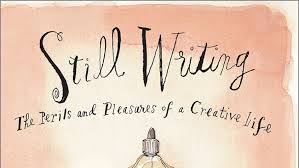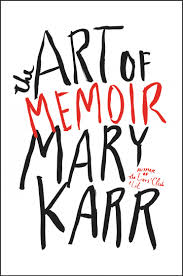On Memoirs and Writing
11/13/15 On Memoirs and Writing
I’ve never been one for reading memoirs. Oh sure, biographies, or a now and again autobiography, but memoirs just seemed too sticky for me. I never wanted to know that one of my favorite movie stars hated wire hangers, and beat her daughter, or really anything of the dirty laundry that takes place in the confines of a family. But this year I stumbled into the rabbit hole of the memoir.
One of the things I learned quickly was that memoirists don’t seem satisfied with writing just one memoir. Recently, rocker Patti Smith has been getting a lot of publicity for her memoir, M Train. Her three previous memoirs are, Woolgathering, The Coral Sea, and Just Kids, which won the 2010 National Book Award. Next December Patti will turn seventy, but with only three memoirs she has a lot of writing to do if she’s going to catch fellow singer-songwriter, Judy Collins. At age seventy-six, Judy has lived a full life, full enough to write seven memoirs. I’m sure that a childhood with polio, followed by a life filled with drug and alcohol addition, bulimia, relationships with famous and interesting men, and the tragic suicide of her only son, is certainly material for several books, but seven?
I guess some people might argue that everything Hemingway wrote was a memoir, just colored as fiction. While that might be an exaggeration, it’s not much of one. This year I’ve read Hemingway’s The Garden of Eden and Islands in the Stream, both thinly veiled novels of aspects of his life. I also recently read A Moveable Feast, clearly a memoir of his Paris days. When writing about his own life he seemed to have the feeling that, with the exception of Gertrude Stein, he was the smartest person in the room.
Kim Gordon’s Girl in a Band: A Memoir, is about, well, Kim Gordon as the girl in a punk rock band. OK, not a recognized name like Judy Collins or Patti Smith, but famous in her own right as the female bass player for Sonic Youth, a band which achieved fame in the alternative music world in the 80’s and early 90’s. Ms. Gordon excels at name-dropping. She and Kurt Cobain were great friends, and she holds a low opinion of Courtney Love.
At Home in the World is Joyce Maynard’s account of her relationship with J. D. Salinger. Maynard is a very successful writer. Two of her novels, To Die For and Labor Day, are best sellers that have been made into films. Early fame hit her when The New York Times asked her to write an op-ed piece entitled, An Eighteen-Year-Old Looks Back on Life. Really. A very presumptuous thought. The article included her photo and that was enough for Salinger. She was eighteen, he was fifty-three. There is no way that he is going to come out of this memoir looking good. And, I think most reasonable people will agree, deservedly so.
Two women that I believe have mastered the craft of the memoir are Dani Shapiro and Mary Karr.
 In addition to multiple novels, Dani Shapiro’s memoir work includes, Slow Motion: A True Story, and Devotion. I cannot imagine writing Slow Motion, and telling the world about how, as a college student, I became sexually involved with the stepfather of my best friend. But that is what Shapiro does, and she goes on to reveal her dependence on cocaine and alcohol. With her memoir, Devotion, as the title implies, comes Shapiro’s spiritual redemption.
In addition to multiple novels, Dani Shapiro’s memoir work includes, Slow Motion: A True Story, and Devotion. I cannot imagine writing Slow Motion, and telling the world about how, as a college student, I became sexually involved with the stepfather of my best friend. But that is what Shapiro does, and she goes on to reveal her dependence on cocaine and alcohol. With her memoir, Devotion, as the title implies, comes Shapiro’s spiritual redemption.
Mary Karr is a fascinating person, and one of literature’s Horatio Alger’s. She came from nothing, dropped out of high school, clawed her way into college, and is now Professor of English Literature at Syracuse University. Her three memoirs run in chronological order.  The award winning The Liars’ Club probes a troubled childhood in Southeast Texas in the 1960’s. Cherry deals with her late adolescence and early womanhood. Lit: A Memoir covers her struggle in adulthood trying to find herself as a wife, a mother, and a career woman, as she deals with alcohol. Like Shapiro she finds redemption through a religious conversion. Karr’s language is true to her rough Texas youth, coarse, funny, and honest.
The award winning The Liars’ Club probes a troubled childhood in Southeast Texas in the 1960’s. Cherry deals with her late adolescence and early womanhood. Lit: A Memoir covers her struggle in adulthood trying to find herself as a wife, a mother, and a career woman, as she deals with alcohol. Like Shapiro she finds redemption through a religious conversion. Karr’s language is true to her rough Texas youth, coarse, funny, and honest.
Shapiro and Karr have both written two very different types of book about writing.
 Still Writing, The Perils and Pleasures of a Creative Life, is Shapiro’s small but informative book on general writerly advice. On recognition she says, “There is no magical place of arrival. There is only the solitary self facing the page…Every day a new indignity. The rejection is without end.” Expect it. Live with it, it’s your life as a writer. While this sounds glum, she still inspires. “I try to remember that to sit down and write is a gift. That if I do not seize this day, it will be lost.” And here is perhaps the most important message any writer can ever receive, “The only reason to be a writer is because you have to.”
Still Writing, The Perils and Pleasures of a Creative Life, is Shapiro’s small but informative book on general writerly advice. On recognition she says, “There is no magical place of arrival. There is only the solitary self facing the page…Every day a new indignity. The rejection is without end.” Expect it. Live with it, it’s your life as a writer. While this sounds glum, she still inspires. “I try to remember that to sit down and write is a gift. That if I do not seize this day, it will be lost.” And here is perhaps the most important message any writer can ever receive, “The only reason to be a writer is because you have to.”
She shatters staid writing advice when she says, “You can do absolutely anything—tell, not show, make excellent use of an adverb—as long as you can pull it off. Get out there on the high wire, unafraid to fall.”
Her book is divided into three parts entitled, Beginnings, Middles, and Ends, and her advice appropriately fits each of these parts of the writer’s journey.
Mary Karr’s The Art of Memoir, sounds like it offers guidance on writing a memoir, and it does, but it also offers much for the writer of any genre. Her chapter, “A Voice Conjures the Human Who Utters It,” contains advice that easily applies to a fiction writer as it does for the memoirist. No matter whether the point of view is first person, third person, or omniscient view, it is the voice that carries the story, and in Karr’s words, “For the reader, the voice has to exist from the first sentence.”
it also offers much for the writer of any genre. Her chapter, “A Voice Conjures the Human Who Utters It,” contains advice that easily applies to a fiction writer as it does for the memoirist. No matter whether the point of view is first person, third person, or omniscient view, it is the voice that carries the story, and in Karr’s words, “For the reader, the voice has to exist from the first sentence.”
She uses the term “Sacred Carnality” and by carnal she means, use of the five senses. “In writing a scene, you must help the reader employ smell and taste and touch as well as image and noise.”
When talking to writers about editing or revising their work you’ll find some contend they love it, while other writers hate it. Karr says she has found three truths about writing: “(1) Writing is painful—it’s ‘fun’ only for novices, the very young, and hacks; (2) other than a few instances of luck, good work only comes through revision; (3) the best revisers often have reading habits that stretch back before the current age, which lends them a sense of history and raises their standards for quality.”
Regarding number three, she elaborates, “Reading through history cultivates in a writer a standard of quality higher than the marketplace.” The theory here is the works that have stood the test of time are of a superior quality, and for me is reminiscent of advice that Gertrude Stein gave to Hemingway, “You should only read what is truly good or what is frankly bad.”
Michael J. Tucker
Growing up in the cold northern climate of Pittsburgh, PA, and an only child, Mike was often trapped indoors and left to his own devices, where he would create space ships out of cardboard boxes, convert his mother’s ironing board into a horse and put on his Sunday suit and tie and his father’s fedora and become a newspaper reporter or police detective. This experience left him with an unlimited imagination and the ability to write electrifying short stories and novels.
Mike is the author of two critically acclaimed novels, Aquarius Falling and Capricorn’s Collapse. He has also published a collection of short stories entitled, The New Neighbor, and a poetry collection; Your Voice Spoke To My Ear. His poem, The Coyote’s Den, was included in the Civil War Anthology, Filtered Through Time.
He is a judge for the Janice Keck Literary Award, and the moderator of the Williamson County Library Writers’ Critique Group.
Reviewers of Mike’s novels have compared his writing to: Thomas Wolfe’s I Am Charlotte Simmons, and J. D. Salinger’s Catcher in the Rye. Albert Beckus, Professor Emeritus of Literature at Austin Peay University recently wrote of his novels: “They move naturalistically in the American literary tradition of Theodore Dreiser’s An American Tragedy, but with a twist…as found in The Great Gatsby.”
- Web |
- More Posts(22)